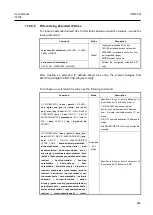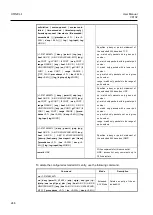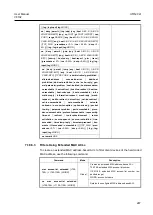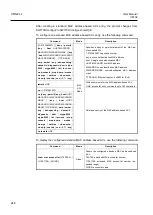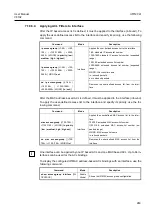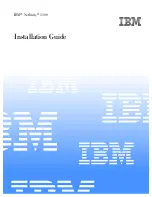
User Manual
UMN:CLI
V8102
235
-p
Interface is not remained in promiscuous mode
-q
Reduce output quantity of protocol information. Therefore, output line is shorter.
-S
Output TCP sequence number not relative but absolute
-t
Time is not displayed on each output line
-v
Display more information
-w
Save the captured packets in a file instead of output
-x
Display each packet as hex code
-c
NUMBER
Close the debug after receive packets as many as the number
-F
FILE
Receive file as filter expression. All additional expressions on command line are ig-
nored.
-i
INTERFACE
Designate the interface where the intended packets are transmitted. If not designated,
it automatically select a interface which has the lowest number within the system
interfaces (Loopback is excepted)
-r
FILE
Read packets from the file which created by
‘-w’ option.
-s SNAPLEN
This is used to configure sample packet except the 68 byte default value. The 68 byte
is appropriate value for IP, ICMP, TCP and UDP, but it can truncate protocol infor-
mation of Name server or NFS packets. If sample size is long, the system should take
more time to inspect and packets can be dropped for small buffer size. On the contra-
ry, if the sample size is small, information can be leaked as the amount. Therefore,
user should adjust the size as header size of protocol.
-T
TYPE
Display the selected packets by conditional expression as the intended type.
rpc (Remote Procedure Call)
rtp (Real-time Transport Protocol)
rtcp (Real-time Transport Control Protocol)
vat (Visual Audio Tool)
wb (distributed White Board)
EXPRESSION
Conditional expression
Tab. 7.4
Options for Packet Dump
7.17.3
Debug Packet Dump
The V8102 provides network debugging function to prevent system overhead for un-
known packet inflow. Monitoring process checks CPU load per 5 seconds. If there is more
traffic than threshold, user can capture packets using TCP dump and save it to file. You
can download the dump file with the name of file-number.dump after FP connection to the
system. See the dumped packet contents with a packet analyze program.
To debug packet dump, use the following command.
Command
Mode
Description
debug packet log
COUNT
VALUE
TIME
[<1-10>]
Enable
Debugs packet dump logs according to a condition.
COUNT: packet counting
VALUE: CPU threshold
1-10: file number
no debug packet log
Deletes the information of packet dump log.

























